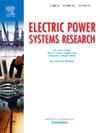求解carson和pollaczek积分的高阶Newton-cotes和gauss积分规则
IF 4.2
3区 工程技术
Q2 ENGINEERING, ELECTRICAL & ELECTRONIC
引用次数: 0
摘要
电磁波传播的问题,尽管很重要,却没有一个简单的解析解。因此,近似——例如假设一个半无限齐次地平面——具有实际意义。利用准静态近似,Carson和Pollaczek推导出积分方程来计算水平电流在有损耗地平面上产生的电磁场。Carson用幂级数展开提出了这些表达式的第一个解,但是这种方法缺乏一致的收敛性。从那时起,人们做出了各种努力,以获得更准确的解决方案。在这个意义上,已经发展了求解这些积分方程的主要方法。第一种方法涉及修改被积函数以获得解析解,而第二种方法依赖于使用数值积分技术,这对于求解没有封闭形式解的积分是必不可少的。数值方法的精度受积分方案的选择、顺序和样本数量的影响。然而,用高阶方法和增加样本点来提高精度的理论期望常常受到数值表示约束的限制。这种约束之一是二进制计算中的有限位表示。尽管存在这些限制,数值方法仍然是求解某些积分的唯一可行方法。本文介绍了牛顿和高斯积分方法的实现,分析了它们在方法类型、顺序和样本计数方面的性能。由于Carson和Pollaczek的方程包含一个递减的指数项,无限上限被一个有限边界所取代,而不超过预定义的误差阈值。通过应用极限替换和数值技术,我们得到了一个保证在所有情况下一致收敛的新解。本文章由计算机程序翻译,如有差异,请以英文原文为准。
Higher-order Newton-cotes and gauss-quadrature integration rules to solve carson and pollaczek integrals
The problem of electromagnetic wave propagation, despite its importance, does not have a simple analytical solution. Therefore, approximations—such as assuming a semi-infinite homogeneous ground plane—are of practical interest. Using quasi-static approximations, Carson and Pollaczek derived integral equations to calculate the electromagnetic field produced by a horizontal current over a lossy ground plane. Carson proposed the first solution to these expressions using power series expansions, but this approach lacks uniform convergence. Since then, various efforts have been made to obtain more accurate solutions. In this sense, main approaches have been developed to solve these integral equations. The first involves modifying the integrand to obtain an analytic solution, while the second relies on using numerical integration techniques, which are essential for solving integrals without closed-form solutions. The accuracy of numerical methods is influenced by the choice of integration scheme, order, and number of samples. However, theoretical expectations of improved accuracy with higher-order methods and increased sample points are often limited by numerical representation constraints. One of this constrain is the finite bit representation in binary calculations. Despite these limitations, numerical methods remain the only viable approach for certain integrals. This work presents the implementation of Newton and Gauss integration methods, analyzing their performance concerning method type, order, and sample count. Since Carson and Pollaczek’s equations include a decreasing exponential term, the infinite upper limit is replaced by a finite bound without exceeding a predefined error threshold. By applying this limit substitution and numerical techniques, we obtain a new solution that ensures uniform convergence across all cases.
求助全文
通过发布文献求助,成功后即可免费获取论文全文。
去求助
来源期刊

Electric Power Systems Research
工程技术-工程:电子与电气
CiteScore
7.50
自引率
17.90%
发文量
963
审稿时长
3.8 months
期刊介绍:
Electric Power Systems Research is an international medium for the publication of original papers concerned with the generation, transmission, distribution and utilization of electrical energy. The journal aims at presenting important results of work in this field, whether in the form of applied research, development of new procedures or components, orginal application of existing knowledge or new designapproaches. The scope of Electric Power Systems Research is broad, encompassing all aspects of electric power systems. The following list of topics is not intended to be exhaustive, but rather to indicate topics that fall within the journal purview.
• Generation techniques ranging from advances in conventional electromechanical methods, through nuclear power generation, to renewable energy generation.
• Transmission, spanning the broad area from UHV (ac and dc) to network operation and protection, line routing and design.
• Substation work: equipment design, protection and control systems.
• Distribution techniques, equipment development, and smart grids.
• The utilization area from energy efficiency to distributed load levelling techniques.
• Systems studies including control techniques, planning, optimization methods, stability, security assessment and insulation coordination.
 求助内容:
求助内容: 应助结果提醒方式:
应助结果提醒方式:


